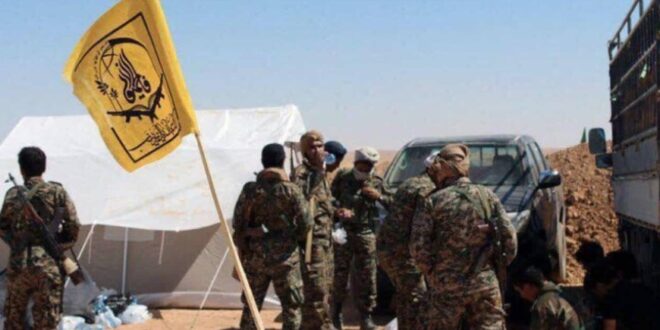Clashes in Eastern Syria curiously coincided with the claims of an impending American military operation Iyad al-Jaafari writes in Syria TV.
The Iranian response to the ongoing protests in As-Suweida, which could potentially spread across Syria, stands in contrast to their actions during the early stages of the 2011 revolution. This time, the Iranian intervention is more immediate and proactive, signalling an attempt to anticipate and shape developments on the ground by initiating a new front of conflict in the eastern part of the country. This indicates that the “Iranian axis” recognizes the gravity of the situation in Syria and fears the prospect of entering into a protracted, costly, and politically challenging war to rescue the Assad regime once again.
Back in 2011, the Iranian characterization of protests in Syria was not dissimilar to the situation currently unfolding in As-Suweida. However, within just two weeks of the start of the As-Suweida protests, key figures aligned with Tehran have emerged to deliver fervent speeches. These speeches affirm the narrative of a “conspiracy” behind the events and emphasize the alliance’s mobilization to support the Assad regime, along with veiled threats of combat in defence of the regime.
Interestingly, it was the regime itself that orchestrated a preemptive response to potential protests arising from worsening living conditions. This preemptive action followed a campaign by activists with close ties to the regime, during which they openly criticized the regime’s leader. Some advocates changed their positions, while others were detained, indicating a mixture of security pressure and manipulation.
Several activists who shifted their stance justified their change by warning of an impending war on the eastern front, echoing Bashar Barhoum’s declaration that “the voice of war speaks the loudest.” These warnings coincided with reports in semi-official media outlets, notably Al-Watan newspaper, which cited Iraqi sources to suggest impending suspicious American military movements aimed at disrupting the Tehran-Damascus route along the Syrian-Iraqi border.
Despite denials from both the United States and the Syrian Democratic Forces (SDF) regarding any planned military operation, the “Iranian axis” escalated its narrative. Prominent figures within the alliance, including former Iraqi Prime Minister Nuri al-Maliki and Hezbollah’s Secretary-General, Hassan Nasrallah, linked an alleged U.S. military action to the As-Suweida protests, framing the protests as part of an “American project.”
Curiously, clashes between the SDF and the Deir-ez-Zor Military Council, sparked by the arrest of the Council’s leader Ahmed al-Khabil, coincided with the claims of an impending American military operation in eastern Syria. Some analysts suggest that the timing of these clashes and the inconsistencies among the Syrian armed factions supported by the U.S. may indicate Iranian infiltration and coordination within these factions.
The claims made by the “Iranian axis” do not align with the actual situation. While the alliance seeks to escalate tensions in American-controlled areas, the U.S. lacks the capacity or inclination to seal the Syrian-Iraqi border against the Iranian movement. The “Iranian axis” exploits the idea of an “alleged war” in eastern Syria to demonize the protest movement, which is likely to intensify across Syria. This preemptive narrative could serve as a justification for suppressing the protests alongside the regime, much like what occurred in 2011.
Given the absence of identifiable extremist elements linked to the As-Suweida protests, the alliance’s new pretext revolves around an alleged American project in eastern Syria. This pretext may even pave the way for an armed conflict front in the east, with the assumption that the U.S. administration is reluctant to engage in armed confrontations in an election year. Iranian decision-makers might wager on forcing a U.S. withdrawal from eastern Syria while leveraging the conflict as a tool to silence dissent against deteriorating living conditions.
In the regime’s current state, the reliance on war as a means of perpetuation is evident. In the absence of war, there is an expectation that life will return to normal for Syrians, which poses a daunting challenge for the regime due to deep-rooted corruption and the pervasive influence of the “mafia economy” mindset within its structure.
 Eurasia Press & News
Eurasia Press & News




